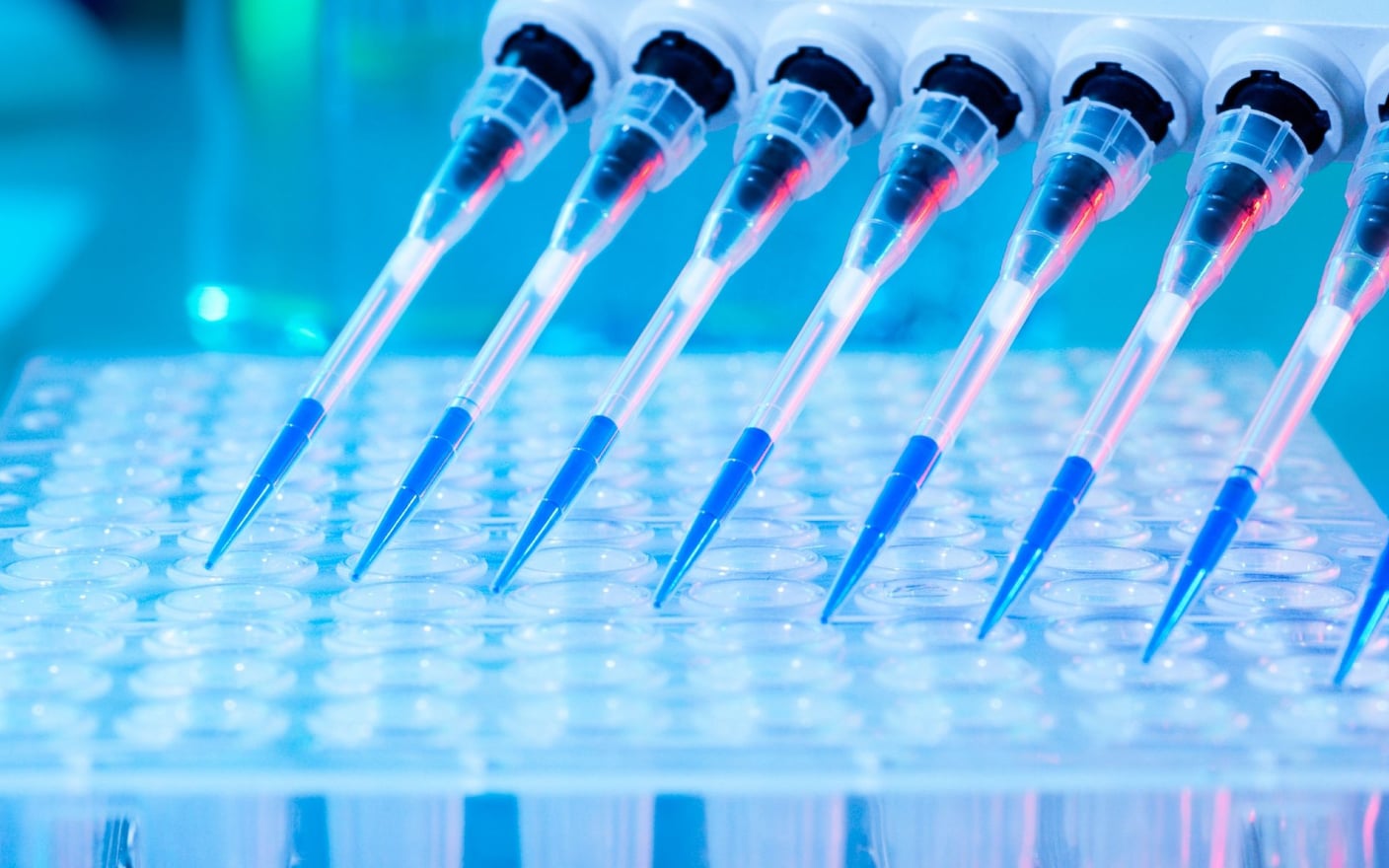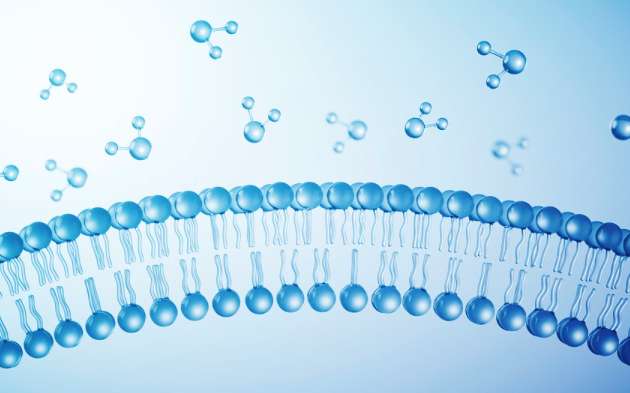In vitro studies (e.g., using human hepatocytes) can help us to understand which drugs may induce CYP enzymes and the potential degree of induction. These in vitro data can be used to predict DDI in humans and provide guidance for clinical medication. However, what endpoints should be used, and how do we interpret the data from the in vitro CYP induction assay?
The 2020 Food and Drug Administration (FDA) guidance only mentioned messenger RNA (mRNA) as the primary endpoint, which raises the question of whether there is a need for further monitoring of the changes in enzyme activity levels. Our practices for this question are as follows.
-
Based on the iteration of FDA DDI guidance, enzyme activity has always been the simplest and most frequently used endpoint.
-
According to the genetic central dogma, changes in mRNA levels precede changes in enzyme activity levels. Thus, early screening assays can rely only on assessments of the mRNA levels.
-
A single endpoint is susceptible to interference from different factors. Enzyme activity levels are susceptible to misleading results if the investigational drug itself is an inhibitor of that enzyme, while mRNA levels are susceptible to the compound’s potential for down-regulation of gene expression; thus, both endpoints need to be included in the IND-enabling study.
CYP enzyme activity is important among the FDA history guidelines
The FDA Guidance on DDI has been updated several times since its first edition. In the first edition (1997), the guidance only briefly summarized the direction of DDI research and did not specify the research protocols or study designs1. However, in subsequent editions, Guidance on these specific contents has been included. The following section describes the evolution of the criteria for determining the induction effect of test drugs on CYP enzymes in the FDA guidelines.
The 2004 version of the FDA Guidance initially stated that the most reliable method to study the induction potential of a drug is to quantify the change in enzyme activity after culturing primary hepatocytes, and the endpoints to identify enzyme induction are the fold induction by the test compound relative to vehicle control or the percentage of positive control. A drug can be considered an enzyme inducer when it produces more than a 2-fold increase in enzyme activity or 40% of the positive control2.
In the 2006 version of the Guidance, the design of in vitro enzyme induction assays was described in more detail. To assess changes in enzyme activity, the statement that “the increase in induction relative to the matrix control greater than 2-fold is considered as an inducer” was deleted, leaving only the statement that “a change that is equal to or greater than 40% of the positive control is considered as an enzyme inducer”. Since then, the criteria for determining the induction based on the change in enzyme activity levels have not been revised3.
In the 2012 version, for the first time, the changes in the mRNA levels of the CYP enzymes caused by the investigational drug in human hepatocytes were added as an important endpoint for evaluating CYP enzyme induction. This is because the induction potential may be masked in the presence of concomitant inhibition if only the enzyme activity levels are monitored. Tranional analysis through the measurement of mRNA levels may address this challenge. However, the criteria for determining changes in mRNA levels are not clearly stated in this version4.
In the 2017 version, which has a more detailed deion of the criteria for determining mRNA levels than the previous version, “a ≥ 2-fold increase in mRNA and a response ≥ 20% of the response of the positive control in the presence of an investigational drug is interpreted as a positive finding. If the induction effect is present in at least one donor, a follow-up evaluation is needed” 5.
Finally, in the 2020 final version of the guidance, a fold change in mRNA levels is listed as the primary method for evaluating CYP induction, and detecting enzyme activity levels is also mentioned as an acceptable endpoint. For the evaluation of CYP induction, the criteria for an inducer are described in detail below: “A drug is interpreted as an inducer if: (1) it increased mRNA expression of a CYP enzyme in a concentration-dependent manner, and (2) the fold change of CYP mRNA expression relative to the vehicle control is ≥ 2-fold at the expected hepatic concentrations of the drug. However, the induction potential should not be ruled out for an investigational drug that increases CYP enzyme mRNA less than 2-fold of the vehicle control, if the increase is more than 20% of the response of the positive control.” 6

Figure 1. The 2020 FDA Guidelines, In Vitro Drug Interaction Studies - Guidelines on Cytochrome P450 Enzyme and Transporter-Mediated Drug Interactions
As can be seen from the revision history of the FDA guidance, to evaluate CYP induction in vitro, quantifying relative changes in mRNA, and/or enzyme activity, is recommended. In the recent versions of the guidelines, the focus has gradually shifted towards changes in mRNA levels (Table 1).Yet, the measurement of enzyme activity continues to be the simplest and most widespread method used.
|
Guidelines releases |
-Endpoint |
Criteria |
|
2006 |
enzyme activity |
A drug that produces a change that is equal to or greater than 40% of the positive control can be considered an enzyme inducer in vitro and in vivo evaluation is warranted. |
|
2012 |
mRNA |
If the in vitro induction results are positive according to predefined thresholds using basic models, the investigational drug is considered an enzyme inducer and therefore further in vivo evaluation may be warranted. |
|
2017 |
mRNA |
A ≥ 2-fold increase in mRNA and a response ≥ 20% of the response of the positive control in the presence of an investigational drug are interpreted as a positive finding. |
|
2020 |
mRNA |
A drug is interpreted as an inducer if: (1) it increased mRNA expression of a CYP enzyme in a concentration dependent manner; and (2) the fold change of CYP mRNA expression relative to the vehicle control is ≥ 2-fold at the expected hepatic concentrations of the drug. |
Table 1. Changes in metrics and judgment criteria for CYP enzyme induction in the FDA guidelines from 2006 to 2020
mRNA levels can be chosen as the only endpoint in the early screening studies
CYPs are induced by three “orphan receptors” of the nuclear or steroid receptor superfamily. Aryl Hydrocarbon Receptors (AHR), nuclear pregame X receptor (PXR), and the constitutive androstane receptor (CAR) are ligand-activated tranion factors that regulate CYP expression.
The process is as follows: once the nuclear receptor is activated, the genes become more capable of being transcribed into pre-mRNA, which is then spliced, capped, and modified with a poly A tail to produce mature mRNA. mRNA leaves the nucleus and enters the cytoplasm, where a polymerase translates it into polypeptide chains, i.e., proteins. The polypeptide chains fold into three-dimensional structures and become functional proteins, including enzymes. As an example, the regulation of CYP1A2 is shown in Figure 2.

Figure 2. Schematic diagram of the regulation of CYP enzyme expression by AhR nuclear receptors7
This process is affected by many factors, including the stability of the mRNA, translation efficiency, and post-translational modification of the protein. Thus, in the early screening stage, it is recommended to use the up-regulated mRNA level as an endpoint to evaluate CYP enzyme inducibility, as it can provide a more sensitive assessment during the initial screening.
However, a single endpoint has limitations, and thus, even in the early screening stage, it is recommended that the drug is assessed at multiple concentrations to avoid the limitations of mRNA detection effectively.
Both mRNA and enzyme activity levels need to be examined in the IND-enabling studies
Due to the consideration that enzyme activity levels may be affected by the test compound being a CYP enzyme inhibitor, particularly one showing time-dependent inhibition (TDI), the changes in mRNA levels were added to the FDA guidance and gradually became the primary assessment method. However, the phenomenon of gene down-regulation caused by non-cytotoxic effects has also been found in studies of mRNA levels. Therefore, false-negative results remain a possibility when only a single concentration, especially a higher concentration, is used to assess CYP enzyme induction, as shown in Figure 38.

Figure 3. Induction of the mRNA and activity levels of CYP enzymes by different concentrations of the tested compound
When both endpoints are used at the same time, inconsistencies can still occur. In the event of such an inconsistency, we recommend interpreting the results in conjunction with other data for the compound. Overall, there are six main scenarios 8.
Scenario 1: Typical behavior of a positive inducer
Scenario 2: No induction at either the enzyme activity or the mRNA level
Scenario 3: Induction at both the enzyme activity and mRNA levels
Scenario 4: Induction at the mRNA level, but not at the enzyme activity level, suggesting that the compound may also be an inhibitor of the enzyme
Scenario 5: No induction at the mRNA level, but induction at the enzyme activity level, suggesting that the compound may destabilize mRNAs
Scenario 6: Down-regulation of both the mRNA and enzyme activity levels, suggesting that the compound inhibits CYP gene expression

Figure 4. Details of the 6 possible scenarios
Talk to a WuXi AppTec expert today to get the support you need to achieve your drug development goals.
Authors: Ying Sun, Lifang Jiang, Genfu Chen
Committed to accelerating drug discovery and development, we offer a full range of discovery screening, preclinical development, clinical drug metabolism, and pharmacokinetic (DMPK) platforms and services. With research facilities in the United States (New Jersey) and China (Shanghai, Suzhou, Nanjing, and Nantong), 1,000+ scientists, and over fifteen years of experience in Investigational New Drug (IND) application, our DMPK team at WuXi AppTec are serving 1,500+ global clients, and have successfully supported 1,200+ IND applications.
Reference
1. Guidance for Industry, Drug Metabolism/Drug Interaction Studies in the Drug Development Process: Studies In Vitro. 1997
2. FDA guidance for industry: Drug Interaction Studies -Study Design, Data Analysis, and Implications for Dosing and Labeling. October. 2004.
3. FDA guidance for industry: Drug Interaction Studies -Study Design, Data Analysis, and Implications for Dosing and Labeling. September 2006.
4. FDA guidance for industry: Drug Interaction Studies -Study Design, Data Analysis, Implications for Dosing, and Labeling. Recommendations. February 2012.
5. FDA guidance for industry: In Vitro Metabolism- and Transporter- Mediated Drug-Drug Interaction Studies. October 2017.
6. FDA guidance for industry: In Vitro Drug Interaction Studies-Cytochrome P450 Enzyme- and Transporter-Mediated Drug Interactions. January 2020.
7. Bach L. TOLERANCE DIFFERENCES BETWEEN SIBLINGS OF THE POLYCHAETE SPECIES COMPLEX CAPITELLA CAPITATA TO THE PAH, FLUORANTHENE [J]. 2005. doi:10.13140/rg.2.1.4538.8964.
8. Wong, S. (2021). Determination of In Vitro Cytochrome P450 Induction Potential Using Cryopreserved Human Hepatocytes. In: Yan, Z., Caldwell, G.W. (eds) Cytochrome P450. Methods in Pharmacology and Toxicology. Humana, New York, NY. http://doi.org/10.1007/978-1-0716-1542-3_12.
Stay Connected
Keep up with the latest news and insights.













